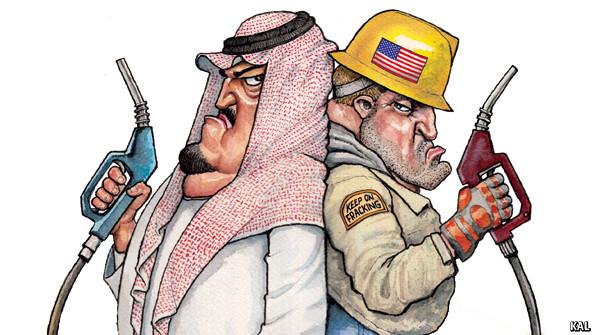The Danger Of Deeper OPEC+ Cuts
Authored by Nick Cunningham via OilPrice.com,
OPEC+ agreed to cut production by 500,000 bpd, sending oil prices higher on Friday. During mid-day trading, WTI was just shy of $60 per barrel, and Brent moved closer to $65.
In total, the 1.2 million-barrel-per-day (mb/d) cuts from OPEC will rise to 1.7 mb/d. Those details had been reported on Thursday. But when OPEC+ made it official on Friday, Saudi Arabia also assured the market that it would continue with its voluntary cuts beyond what is required.
With the Saudi cuts, the total contributions rise to 2.1 mb/d of reductions. The deal takes effect in January, and the group will meet again in March. Of the 500,000 bpd in extra cuts, OPEC will shoulder around 372,000 bpd and the non-OPEC group led by Russia will take on 131,000 bpd.
In a statement, OPEC noted the importance of “each individual country adhering to their voluntary production adjustments.” It was a diplomatic way of calling out the countries that fell short on compliance for much of this year, such as Iraq and Nigeria.
What to make of all of this?
OPEC+ clearly wanted to head off the supply surplus that most analysts saw coming in 2020. The deal defied predictions from most analysts, who saw a simple extension as all but inevitable. Getting everyone on board for additional cuts was a big lift.
However, the deal only lasts through March. While it can obviously be extended, OPEC+ seems to think that the surplus might be temporary and solvable.
There are a few other factors that slightly undercut the impact. Most important is that the group was already over-complying with the agreement, which is to say, they were already cutting deeper.
“Thanks to voluntary and involuntary production cuts, OPEC has been producing considerably less than stipulated in the agreement for months,” Commerzbank said in a note.
“In other words, the latest decisions change very little.”
The investment bank went on to add that the danger is not over for OPEC.
“We believe that yesterday’s decisions do not go far enough. After all, the oversupply in the first quarter of 2020 is far higher than 500,000 barrels per day,” Commerzbank said on Friday.
“What is more, it remains unclear how the sizeable oversupply that will likewise be seen in the second quarter can be contained without production cuts.”
As a result, the bank sees downside risks to oil prices.
Other analysts also pointed out the challenges with only a 3-month deal.
“The key take-away thus far is that a formalized agreement until only March 2020 doesn’t do much to help the market price its perspectives beyond that point, or in other words it almost increases the relative level of uncertainty the market has to deal with and leaves lots of room for speculation,” JBC Energy said in a note on Friday.
Goldman Sachs pointed out that the short duration might allow Saudi Arabia to “walk away” if other producers did not fully comply.
But it could also merely be a sign that OPEC+ feels that its task is not all that daunting.
“We really do see some risks of oversupply in the first quarter due to lower seasonal demand for refined products and for crude oil,” Russian energy minister Alexander Novak said.
The extent of the surplus – and the extent of OPEC’s challenge in balancing the market – will very much depend on whether or not U.S. shale can continue to grow. Rystad Energy said in a report that it sees shale growth continuing, even if WTI remains stuck in the mid-$50s. That remains to be seen, and the financial stress spreading in the industry will pose enormous challenges to drillers trying to maintain growth.
But the OPEC+ cuts could throw shale drillers a lifeline if it succeeds in boosting prices.
The danger for the cartel is that if the cuts work too well – if they raise prices too high – U.S. shale could bounce back, potentially increasing the pace of drilling and threatening another wave of supply. Then, OPEC+ might need to extend the cuts again.
Tyler Durden
Mon, 12/09/2019 – 14:45
via ZeroHedge News https://ift.tt/2PuRybH Tyler Durden
